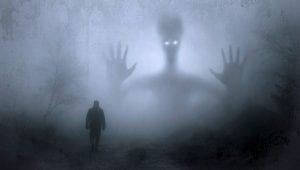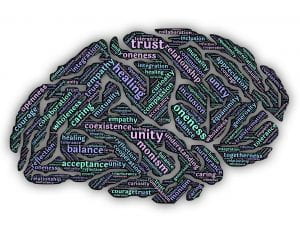
Tumisu / Pixabay – Right or Wrong?
Academic integrity is often espoused and bandied about across educational institutions, especially in the first few weeks of every scholastic year.
La Trobe university describes it as shared values and behaviour that includes but is not exclusive to honesty, fairness and responsible practices. This concept of honesty in academia is a two way street. Educational institutions such as schools and universities are obliged to award credit and acknowledge honestly conducted work. Students are responsible for ensuring that their work meets the required standards mandated (LaTrobe, 2019). The onus of practices that promote academic honesty need to be equally addressed by students, staff, executive and organisations. It is not simply the role of a student to avoid plagiarism, but also the role of education to provide them with the skills and knowledge to do so. Additionally, society needs to realise that academic integrity does not start and finish with plagiarism. Plagiarism is just an aspect of authentic academia. Other practices include the creation of assessment tasks that limit the risk of dishonest practices and organisations to adequately address infringements in their policies with appropriate levels of censure that are age and stage appropriate. The role of teacher librarian is multifaceted when it comes to academic integrity. Due to their dynamic position, a TL is able to address academic honesty from a student and classroom teacher (CT) lens and from a department and school perspective.
Academic honesty starts with the classroom teacher. If teachers continuously utilise reputable sources in their teaching and learning, as well as consistently reference them correctly; then they are modeling good practice. Students (and teachers) need to be aware that academic honesty is not just for assessment tasks. Its for all tasks. Like all skills, good research behavioural practices such as using databases, encyclopaedias and journal articles are essential in formulating evidence based assertions. Using disreputable sources does not bode well for your postulations. W. Edwards Deming was quoted in Forbes (2016) that “without data you’re just a person with an opinion”. My experience as a scientist holds me in good authority in championing this point. In the fields of science and mathematics, opinions hold little value. It is the data from rigorously run experiments that define our thinking process. Poorly run experiments with inconclusive data have no value; as do opinions with no justification and evidence. Opinions are fine when limited to coffee preferences but not in academics.
The other aspect of academic integrity within the TL’s and or CT’s realms, is the explicit teaching of information literacy. Information literacy is defined by the ability to find, seek, use and create information and traditionally the domain of TL area of expertise (Kuhthau et al, 2012). IL needs to be taught and then subsequently assessed in order for students to reach proficiency (Jacobson et al. 2018; Qayyum & Smith, 2018, p257; McGrew et al. 2018). It is not passively acquired by the act of completing a research task – but rather, these skills need to be integrated into daily practice to boost competency (Kong, 2014). Part of these practices include the direct instruction of correct referencing techniques. As mentioned before, plagiarism is AN aspect of academic honesty, it is not the entirety.
Whilst it teaching information literacy and the finer points of referencing is essential, it is important to note that the assessment task itself can be a liability to honest practice. Introducing mandatory evidence of progress, drafts and log books are other useful methods in ensuring authenticity of work. Assessment tasks that are repeated at yearly intervals for indefinite periods of time are also very problematic. This is due to the fact that its simplistic to assume that students do not try to seek aid from older siblings and or cousins. Having a maximum time frame of 2 years allowed for a particular task reduces the likelihood of younger relatives plagiarising from older siblings. Another point to note is that nuances of language in assessment task construction can reduce the likelihood of plagiarism. Requesting students to analyse, justify and relate to their community requires higher order thinking skills and is harder to successfully pass off as own work due to the nature of the questions. TL can be of great assistance to teachers in the construction of assessment tasks. Ezard (2019) pointed out that co-creation and collective capacity is the fundamental basis of true collaborative practice (cited in Templeton, 2019). Collaboration between departments and the library can result in a positive sharing of expertise and knowledge resulting in tasks that elicit deep understanding and truly engage the student.
Departmental heads and school administrators have the last word on academic honesty in a school situation. The school policies are the framework in which the academic integrity of the staff and students is based upon. Therefore it is up to the executives to ensure the policies are current with contemporary practices which includes the rapid evolution of technology and the challenges that it brings. They are also responsible to clearly define what constitutes minor, moderate and major infringements and their appropriate consequences. Staff need to realise that a major infringement in middle school is not the same as a major infringement in senior school. A suggestion would be construct a hierarchy of violations that is clearly distributed to students and teachers. This transparency reduces the likelihood of students citing ignorance in their defence. An example of such a hierarchy from ANU, Canberra and Andrews University in Michigan are available for your perusal.
Much has been said so far about how teaching staff can do to promote academic honesty. But in all honesty, students need to also be aware of their role in this dual relationship. Students need to follow the referencing guidelines set by their institution. Whether it be APA, Harvard or MLA citation styles, students need to conform. They also need to refrain from reusing earlier work and badging it as new work. Many students feel that this cannot be plagiarism as its their own material. But what they are unaware of is that they can reference previous works. The most common ways in which students are academically dishonest is collusion and unequal group work. Collusion as Monash University (2019) points out is the “unauthorised collaboration on assessable work with other people”. Frequently unauthorised partners include parents, older siblings, tutors and friends. It is dishonest to present the collaborative efforts of multiple people off as individual work. Group work is a minefield where academic honesty is concerned. It is very common for one or two people in a group to carry the team. This unequal distribution of work is often due to a participant’s absenteeism and or disinterest. Unfortunately, there is no suggestion I can offer as I have been guilty of doing too much in past group assessments in order to pass/complete a task. In my opinion, (no facts), I believe that group tasks should not be used for summative assessments tasks due the inequitable nature of collaborative groups.
Academic honesty is not just for students to follow when submitting their assignments. Rather it is a mindset, a code of conduct, developed during schooling years and manifested in adulthood. As a code of conduct, infringements of this nature need to be treated similarly to infringements of other conduct related behaviour. Simply assigning punitive measures is not conducive to learning and reducing future occurrences. Instead, it is more productive to create a situation in which academic integrity is the norm and best practice for both students and teachers. Academic honesty is more than just plagiarism. Its is the authenticity of your work and the extension of self.
References
Ezard, T., (2019) Leading the Buzz in your school. ASLA 50th Conference. Canberra
Jacobsen, R., Halvorsen, A., Frasier, A., Schmitt, A., Crocco, M., and Segall, A. (2018). Thinking deeply, thinking emotionally; how high school students make sense of evidence. Theory & Research in Social Education. 46, 232-276. DOI 10.1080/00933104.2018.1425170
Jones, M. & Silberzahn, P. (2016) Without an opinion, you’re just another person with data. Forbes – Media and Entertainment. Retrieved from https://www.forbes.com/sites/awsmediaandentertainment/2019/09/12/how-to-thrive-in-todays-disrupted-media-markets/#7862807770ed
Kuhlthau, C., Maniotes, L. & Caspari, A. (2012). Guided inquiry design: A framework for inquiry in your school. Libraries Unlimited. USA.
Kong, S. (2014). Developing information literacy and critical thinking skills through domain knowledge learning in digital classrooms: An experience of practicing flipped classroom strategy. Computers & Education. 78, pp.160-173, DOI: https://doi.org/10.1016/j.compedu.2014.05.009
Latrobe University (2019). Academic Integrity. Student Administration. Retrieved from https://www.latrobe.edu.au/students/admin/academic-integrity
Monash University (2019). Academic integrity, plagiarism and collusion. Student Administration. Retrieved from https://www.latrobe.edu.au/students/admin/academic-integrity
McGrew, S., Breakstone, J., Ortega, T., Smith, M., and Wineburg, S. (2018). Can students evaluate online sources? Learning from assessments of civic online reasoning. Theory & Research in Social Education. 46, 165-193, DOI 10.1080/00933104.2017.1416320
Qayyum, M., & Smith, David. (2018). Changing research behaviours of university students with progression through a course. Journal of the Australian Library and Information Association. 67: 3 pp256-277 DOI: 10.1080/24750158.2018.1502243
Templeton, T. (2019). Co-existing or co-operating. Trish’s trek into bookspace [blog]. Retrieved from https://thinkspace.csu.edu.au/trish/2019/04/18/co-existing-or-co-operating/




